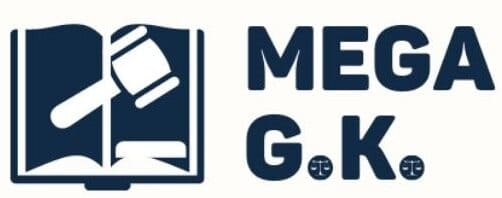
Logical Reasoning for CLAT 2026. For many CLAT aspirants, the term conjures images of abstract puzzles or quick-fire math. But in the CLAT 2026 exam, Logical Reasoning is far more profound. It’s not about memorizing formulas; it’s about mastering the art of critical thinking, dissecting arguments, spotting logical flaws, and thinking clearly under pressure. This isn’t just an exam section, it’s the bedrock of legal acumen, directly assessing the very skills law school demands.
Whether you’re just starting your CLAT journey, halfway through your prep, or aiming to elevate your score from good to exceptional, this comprehensive guide is your strategic roadmap. It’s designed for every aspirant, offering actionable insights to transform your Logical Reasoning capabilities and get you closer to your dream NLU.
Decoding the CLAT Logical Reasoning Section 2026
The CLAT Logical Reasoning section has undergone a significant transformation in recent years, moving away from its traditional format to embrace a more nuanced, critical reasoning-based approach. Understanding this new blueprint is the first step towards effective preparation.
The contemporary CLAT Logical Reasoning section is designed to evaluate a specific set of critical thinking skills rather than rote memorization of logical patterns. Mastery of these core competencies is extremely essential for navigating the passage-based questions effectively.
Identifying Arguments, Premises, and Conclusions
At the core of critical reasoning lies the ability to dissect an argument into its fundamental components. You must be able to recognize what the author is attempting to convey and where the logical progression of ideas ultimately leads. This involves identifying the premises and the conclusion along with the main point or claim that the author is trying to establish. This foundational skill is the bedrock upon which all other analytical question stems in LR are built.
Identifying Assumptions and Drawing Inferences
Beyond the explicit statements, effective critical reasoning demands the subtle art of identifying unstated beliefs and making logical deductions. You must learn to figure out what the author assumes without directly stating it. Inferences, on the other hand, are such statements that can be reasonably and logically derived from the information explicitly provided in the passage, even if not directly stated. The ability to infer what logically follows from a passage and apply these inferences to new situations is a key differentiator in this section.
Strengthening and Weakening Arguments: The Art of Persuasion
A crucial skill tested is the ability to evaluate how new information impacts the validity or persuasiveness of an argument. It is important to understand how to make an argument more convincing by identifying evidence that supports its conclusion, or conversely, how to point out its flaws by identifying information that undermines it. This requires understanding the difference between questions that ask to strengthen an argument and those that ask to weaken it.
Analyzing Logical Flow, Coherence, and Contradictions
Critical reasoning also involves following the sequence of ideas presented in a passage and discerning its overall coherence. This means being able to spot jumps in logic, inconsistencies, or contradictions within the author’s reasoning. Students should develop the ability to draw relationships and analogies between different parts of the argument, identify contradictions and equivalences, and ultimately assess the overall effectiveness and soundness of the arguments presented.
Critical View: Why Traditional “Logical Reasoning” Books Fall Short
The fundamental shift in the CLAT LR section since 2020 means that preparation heavily reliant on shortcuts, memorized patterns, or old-style logic books is likely misguided. The exam has transitioned from formula-based puzzles to passage-based critical reasoning. This necessitates a profound change in preparation strategy. The traditional approach, often involving solving hundreds of similar questions from books focused on series, blood relations, and directions, is no longer effective. The new format demands that aspirants train their brains to read effectively, think critically, and make sound logical choices under pressure.
Furthermore, the strong overlap between the skills required for Logical Reasoning and those for the English section of CLAT is noteworthy. Both sections demand robust reading comprehension, the ability to understand complex vocabulary, and the capacity to grasp nuanced arguments. Regularly reading articles and editorials, as recommended for improving analytical skills, will yield significant benefits across both sections, making preparation more efficient and holistic
The Real Challenge: Why Students Struggle with Logical Reasoning
Most CLAT aspirants make the mistake of treating this section as a traditional logical reasoning test. But CLAT 2026 requires:
- Strong reading speed and comprehension under time pressure
- The ability to deconstruct dense or abstract arguments
- Understanding of current socio-legal issues and their argumentative contours
- Critical thinking beyond surface-level logic
Many students fail not because they lack intelligence, but because they’ve trained incorrectly by memorizing tricks instead of learning to read, analyse, and question.
Your Roadmap to Logical Reasoning Excellence
Phase Duration Focus
Foundation June–July Argument structure, language markers, reading comprehension strengthening. Focus on building concepts.
Development August–September Passage-based drills, question-type mastery, assumption mapping, focus on balancing speed with accuracy. Attempt sectional tests and full-length mocks and thoroughly analyse the same.
Mastery October–November Time-bound mocks, strategy customization, peer review
Polishing December Full-length CLAT drills + 1-on-1 logical reasoning mentorship
Navigating the Pitfalls: Common Mistakes and Their Solutions
Even well-prepared aspirants can fall prey to common errors in the CLAT Logical Reasoning section. Awareness of these pitfalls and proactive strategies to avoid them are essential for maximizing scores.
Reading Too Quickly
A common mistake is to rush through passages, leading to misinterpretations or missed nuances. The fix for this involves a strategic shift in reading approach. First read the questions associated with a passage and then move to the passage. This pre-reading helps in understanding the specific information or type of analysis required. Then, when reading the passage, the focus should be on identifying its overall purpose and the logical flow of its argument. Practicing setting time limits for each question can help in increasing speed while maintaining accuracy.
Guessing Based on Outside Knowledge
The CLAT2026 Logical Reasoning section explicitly penalizes assumptions made using external knowledge. Aspirants often fall into the trap of bringing in their general awareness or personal opinions about a topic. The rule is to stick solely to what the passage states. Every answer must be directly supported by the information presented within the passage, either explicitly or through logical inference.
Avoid Option-Traps
CLAT options are designed to confuse. Often, all choices sound “right.” But only one follows logically. The key is not choosing the truth, but the logical consequence.
Tip: If the answer choice introduces a new fact not mentioned or implied, eliminate it.
Not Reviewing Errors
One of the most frequently repeated mistakes is failing to review incorrect answers thoroughly. Every wrong answer serves as a valuable learning opportunity. For every incorrect response, the analysis should go beyond simply identifying the correct option, it should also look into why the mistake occurred, what specific logical concept was misunderstood, or which reading strategy failed. This systematic identification of strengths and weaknesses, followed by targeted effort on areas of deficiency, defines your effective preparation.
Over-relying on Shortcuts
While some quick techniques or mental maps can be useful, an over-reliance on shortcuts or memorized patterns can be counterproductive in the current CLAT format. The section demands deep understanding and critical evaluation of arguments, not mechanical application of tricks. Skill-based preparation, focusing on conceptual clarity and analytical thinking, will consistently prove more beneficial than seeking easy, formulaic solutions.
Conclusion:
Logic is Not a Shortcut, It’s a Skillset. CLAT 2026 will reward those who can read actively, think clearly, and reason critically. Logical reasoning is no longer about tricks, it’s about habits of thought. Build those habits early, and build them right.
At Mega G.K., we don’t just help you answer better, we help you think better. And in a paper like CLAT, that makes all the difference.
